Mastering Microservices Monitoring: The Best Tools for 2024
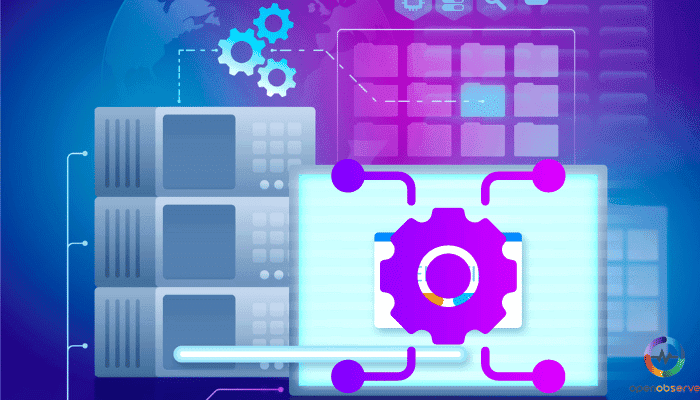
Mastering Microservices Monitoring: The Best Tools for 2024
In a world where software development is going macro, with large-scale applications and complex systems becoming the norm, it's time to focus on the best in micro.
Microservices monitoring tools have taken the software industry by storm, offering unparalleled scalability, flexibility, and agility in delivering new features. They are not just about collecting data but also gaining deep insights into the inner workings of your distributed system. It's about knowing how services interact, spotting slowdowns, and smoothing the user's journey. Where every second counts, proper monitoring tools can make all the difference.
While microservices monitoring tools have transformed how we build and deploy applications, they have also introduced new challenges. The sheer number of services, their dynamic nature, interdependencies, and the nature of microservices make monitoring more complex and demanding. Traditional monitoring tools designed for monolithic systems struggle to provide a holistic view of the entire application stack, and identifying performance bottlenecks and tracing issues across services requires sophisticated distributed tracing capabilities.
To address these challenges, microservices monitoring tools have evolved significantly from 2023 to 2024. AI-powered monitoring solutions like OpenObserve are at the forefront of these advancements, leveraging AI and integrated observability to solve the latest challenges in microservices monitoring. OpenObserve's has designed cutting-edge features for organizations like yours looking to stay ahead in the rapidly evolving software landscape. Now, teams can get valuable insights, fix problems early, and blend monitoring into their workflows.
Let's look deeper into the essentials required and how microservices monitoring tools deliver.
Essentials of Microservices Monitoring

- Understanding Performance and Identifying Issues: At the core of microservices monitoring tools lies the ability to understand the performance of individual services and identify issues before they escalate. By collecting and analyzing metrics such as response times, error rates, and resource utilization, teams can gain valuable insights into the health and behavior of their microservices. This proactive approach allows for quick detection and resolution of performance bottlenecks, ensuring a smooth user experience.
- The Importance of Observability in Microservices: Observability is critical to monitoring. It goes beyond traditional monitoring by providing a holistic view of the system. Observability encompasses three key pillars: metrics, logs, and traces. OpenObserve is a practical example of a monitoring tool that embodies the importance of observability in microservices, highlighting its capabilities to provide a holistic view of the system with its integrated Logs, Metrics, Traces, and Front-end monitoring functionalities.
- Balancing Comprehensive Monitoring and Alert Fatigue: While comprehensive monitoring is essential, it's equally important to balance and avoid alert fatigue. The distributed nature of microservices makes it easy to get overwhelmed by the sheer volume of data and alerts. Practical microservices monitoring tools should provide intelligent alerting mechanisms that prioritize critical issues and reduce noise. By focusing on actionable insights and configuring alerts based on business-critical thresholds, teams can maintain a healthy signal-to-noise ratio and respond to incidents efficiently.
Now that we've got a solid grasp on what to look for in a microservices monitoring tool, it's time to explore the cream of the crop. These microservices monitoring tools are making waves and setting the standard for monitoring in 2024. Get ready to be impressed by their cutting-edge features and unparalleled performance.
The Leading Microservices Monitoring Tools in 2024
- OpenObserve:
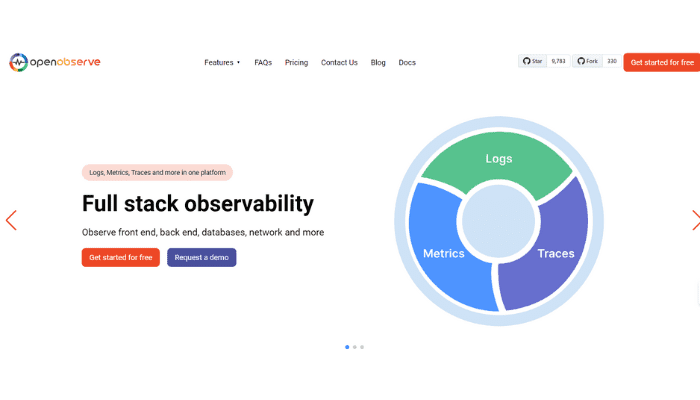
Among the plethora of monitoring tools available 2024, OpenObserve stands out as the leading solution for comprehensive microservice monitoring. Its unified platform, intelligent alerting system, distributed tracing capabilities, extensive integrations, and customizable dashboards empower teams to gain unparalleled visibility into the health and performance of their microservices.
One of the critical strengths of OpenObserve is its distributed tracing capabilities. It allows teams to easily trace requests across multiple services, identify performance bottlenecks, and pinpoint the root cause of issues. OpenObserve's intuitive trace visualization and powerful query language make navigating complex microservice dependencies and optimizing performance effortless. OpenObserve's unique selling propositions, such as incorporating VRL for advanced data manipulation and the promise of significantly lower storage costs, further reinforce its position as a leader in the space.
Get started for free and experience the power of OpenObserve firsthand. - Prometheus:
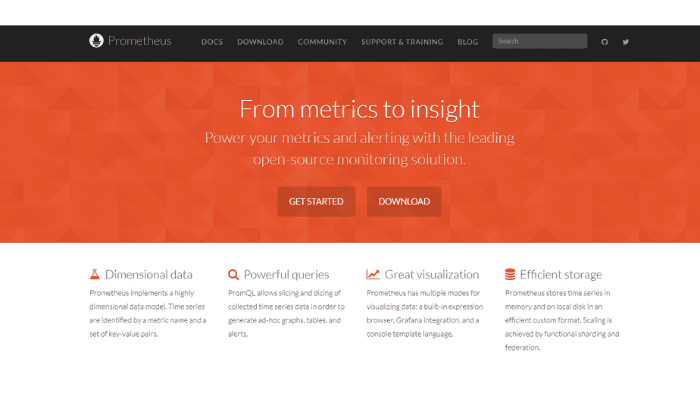
Prometheus is a widely adopted open-source monitoring tool known for its efficiency and scalability. It employs a unique labeling system that allows for flexible querying and aggregation of metrics. With its efficient storage and retrieval mechanisms, Prometheus excels at handling large-scale microservices deployments. Its extensive ecosystem and integration with other tools make it a top choice for monitoring in 2024. - Grafana:
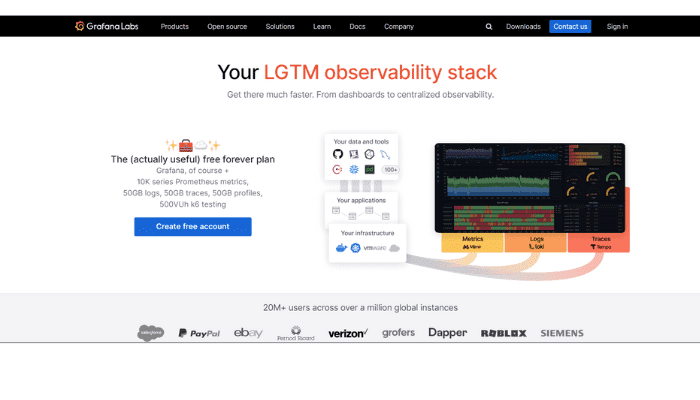
Grafana is a powerful analytical platform that complements monitoring tools like Prometheus. It provides rich features for visualizing time series data and creating custom dashboards. Grafana's intuitive interface and extensive plugin system enable teams to create informative and visually appealing dashboards, making it easier to understand the health and performance of microservices. - Nagios:
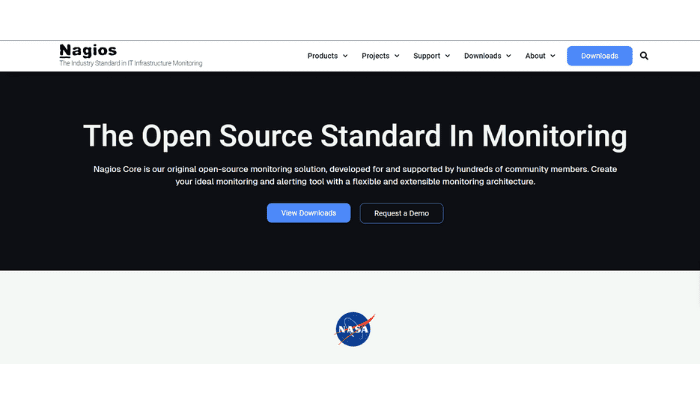
Nagios is a well-established monitoring tool known for its comprehensive monitoring capabilities. It offers various plugins and integrations, making it suitable for monitoring various services and infrastructures. Nagios looks to provide proactive problem-resolution features, such as automated alerts and escalation mechanisms, ensuring that issues get addressed promptly. - Zabbix:
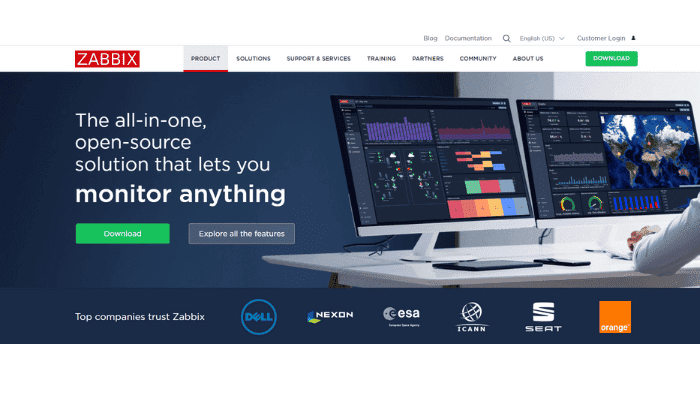
Zabbix is an open-source monitoring solution that excels in network monitoring. It offers a robust and customizable approach to monitoring microservices and their underlying infrastructure. Zabbix provides features like auto-discovery, distributed monitoring, and advanced alerting, making it a reliable choice for ensuring the health and performance of microservices networks. - Icinga:
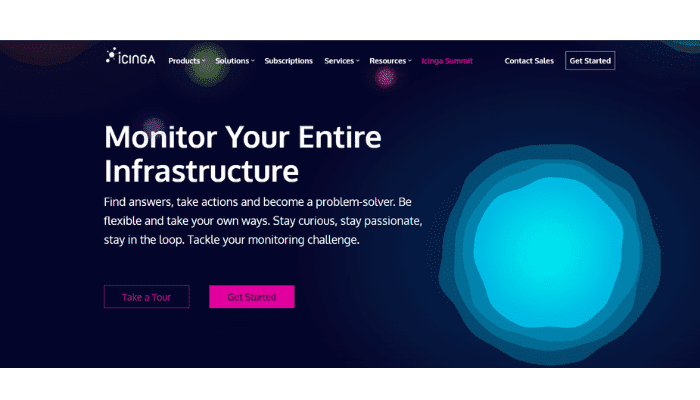
Icinga is an advanced monitoring tool that focuses on ensuring high availability and identifying performance trends. It offers a modern and intuitive user interface that simplifies the monitoring process. Icinga provides features like distributed monitoring, real-time status updates, and advanced reporting capabilities, enabling teams to manage the availability of their microservices proactively. - Sensu:
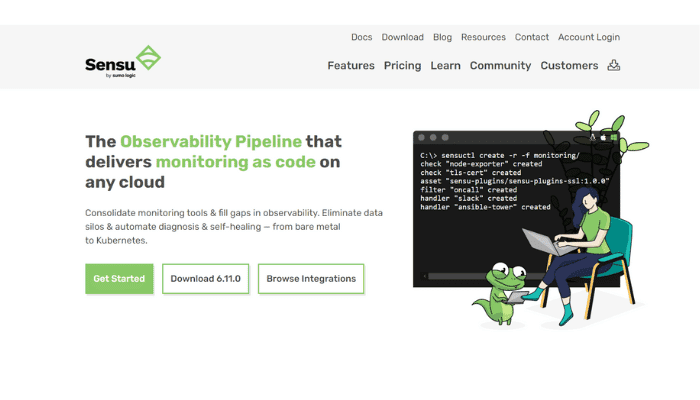
Sensu is a flexible and scalable monitoring framework designed for DevOps teams. It provides a central event pipeline that collects and processes data from various sources. Sensu integrates seamlessly with major platforms and tools, making it easy to incorporate into existing DevOps workflows. Its modular architecture and extensive plugin ecosystem allow for customization and extensibility. - Dynatrace:

Dynatrace is an AI-powered monitoring solution that offers deep insights into microservices performance. It provides code-level visibility, enabling teams to identify and resolve issues quickly. Dynatrace's AI capabilities help in root-cause analysis, anomaly detection, and user behavior insights, making it a powerful tool for optimizing microservices performance and user experience.
While these top tools offer robust features and capabilities, the journey to effective microservices monitoring continues beyond just selecting the right tool. To truly optimize your monitoring strategy, it's crucial to consider additional factors that can enhance your monitoring setup. Let's dive into how to take your microservices monitoring to the next level.
Criteria for Choosing Microservices Monitoring Tools

- Scalability to Grow with Your Microservices Architecture: As your microservices architecture evolves and expands, your monitoring tools should be able to scale accordingly. Look for microservices monitoring tools to handle the increasing complexity and data volume without compromising performance. Scalability ensures that your monitoring solution can keep pace with your growing microservices ecosystem.
- Comprehensive Data Collection and Analysis Abilities: Effective microservices monitoring requires collecting and analyzing data from various sources, including metrics, logs, and traces. Choose microservices monitoring tools that offer comprehensive data collection capabilities and provide powerful analysis features. The ability to correlate data across different dimensions and perform advanced querying and visualization is essential for gaining actionable insights.
- Efficient Distributed Tracing for Debugging: Distributed tracing is fundamental to microservices monitoring. It allows teams to follow a request's path as it traverses multiple services. Good tracing tools offer deep insights for quick bug fixes and solutions.
- Easy Integration with Existing Tools and Systems: Microservices monitoring tools should seamlessly integrate with your existing development and operations ecosystem. Look for tools that offer easy integration with popular CI/CD pipelines, logging frameworks, and incident management systems. Seamless integration ensures a smooth adoption process and minimizes disruption to your existing workflows.
- User-Friendly Experience with Intuitive Dashboards: Microservices monitoring tools should provide a user-friendly experience with intuitive dashboards and visualizations. Good dashboards help teams spot trends, oddities, and crucial metrics quickly. Customizing dashboards based on specific roles and requirements is also valuable for effective collaboration and communication.
- Advanced Alerts and Notifications for Issue Management: Timely alerts and notifications are crucial for proactive issue management. Look for microservices monitoring tools that offer advanced alerting capabilities, including customizable thresholds, intelligent anomaly detection, and integration with popular notification channels such as email, chat, and incident management systems. Effective alerting ensures that the right people are notified at the right time, enabling prompt issue resolution.
- Budget Considerations for Microservices Projects: When selecting microservices monitoring tools, it's important to consider budget constraints. Evaluate the pricing models of different tools and assess their fit with your project's budget. Key factors include the number of services monitored, data retention durations, and extra features needed. Strike a balance between functionality, scalability, and cost-effectiveness to ensure a sustainable monitoring solution.
Now that we've covered the criteria of choosing microservices monitoring, it's crucial to understand the hurdles that come with this territory. Brace yourself as we dive into the common challenges that can make monitoring microservices daunting.
Common Challenges in Microservices Monitoring
- Diversity of Services and Programming Languages: One of the significant challenges in microservices monitoring is the diversity of services and programming languages involved. Different tech and languages for each microservice complicate a single monitoring method. Microservices monitoring tools need to be adaptable to offer a consistent system-wide view.
- Integration Difficulties with Various Platforms and Libraries: Microservices depend on many platforms, libraries, and services. Integrating monitoring tools with these diverse components can be a complex task. Microservices monitoring tools should offer easy integration capabilities and support for popular platforms and libraries to ensure seamless data collection and analysis.
- The Critical Role of Distributed Tracing: A user's request can pass through many services in a microservices setup. Distributed tracing becomes crucial in understanding the flow of requests and identifying performance bottlenecks. OpenObserve addresses explicitly these common challenges, such as the diversity of services and integration difficulties, with its support for various platforms and programming languages, and its efficient distributed tracing that helps pinpoint issues quickly.
Phew! Tackling those challenges is no walk in the park, but fear not! Armed with the right tools and strategies, you can conquer these hurdles and keep your microservices running like a well-oiled machine. Let's switch gears and map out how to pick out the perfect set of microservices monitoring tools that'll keep you two steps ahead in the monitoring game. Ready for this? Here we go!
Enhancing Microservices Monitoring

- The Importance of Matching the Tool to the Project's Specific Needs: When selecting a microservices monitoring tool, it's crucial to consider your project's specific needs and requirements. Each tool has strengths and specialties, and it's important to align them with your project's goals and challenges. Evaluate factors such as the scale of your microservices architecture, the programming languages and frameworks used, and the key performance indicators that matter most to your business.
- Continuous Evolution of Monitoring Strategies Based on Project Experience: Microservices monitoring is not a one-time setup; it requires continuous evolution based on project experience and changing requirements. As your setup changes, so should your monitoring strategies. Regularly assess the effectiveness of your monitoring tools, identify areas for improvement, and make necessary adjustments to ensure optimal coverage and insights.
- The Potential of Managed Service Providers in Offering Advanced Monitoring Solutions: Managed service providers (MSPs) can offer advanced monitoring solutions tailored to the specific needs of microservices projects. These providers bring expertise and experience in monitoring complex distributed systems, and they can help organizations navigate the challenges of implementing and maintaining effective monitoring solutions. MSPs can provide customized dashboards, proactive alerts, and ongoing support to ensure the health and performance of microservices.
OpenObserve's continuous innovation and updates align with the practice of evolving monitoring strategies based on project requirements and experience. This serves as a testament to OpenObserve's commitment to adaptation and growth in microservices monitoring.
With these critical considerations in mind, you're well-equipped to choose the best monitoring tool for your needs and continuously optimize your monitoring strategy. As you embark on your microservices monitoring journey, remember that the landscape is ever-evolving, and staying ahead of the curve is essential. Let's take a moment to reflect on the key takeaways and look towards the future.
Conclusion
As we navigate the complexities of microservices architectures in 2024, having the proper monitoring tools in our arsenal is non-negotiable. The challenges posed by distributed systems demand solutions that provide deep insights, proactive problem-solving, and seamless integration with our DevOps ecosystem.
Among the top monitoring tools of 2024, OpenObserve emerges as the clear leader. Offering a comprehensive platform that addresses the unique needs of microservice monitoring, it empowers teams to gain unparalleled visibility into the health and performance of their microservices through AI-powered alerting, distributed tracing, and extensive integrations.
Take the demo and get an opportunity to experience firsthand the simplicity and cost-effectiveness of integrating OpenObserve into your tech stack. Embrace the power of OpenObserve and take control of your application's performance. Sign up for a free trial today and experience the difference that comprehensive microservice monitoring can make for your organization.
Remember, visibility is key in the world of microservices. Stay ahead of the curve and unlock your microservices' full potential in 2024 and beyond.
Author:

The OpenObserve Team comprises dedicated professionals committed to revolutionizing system observability through their innovative platform, OpenObserve. Dedicated to streamlining data observation and system monitoring, offering high performance and cost-effective solutions for diverse use cases.
